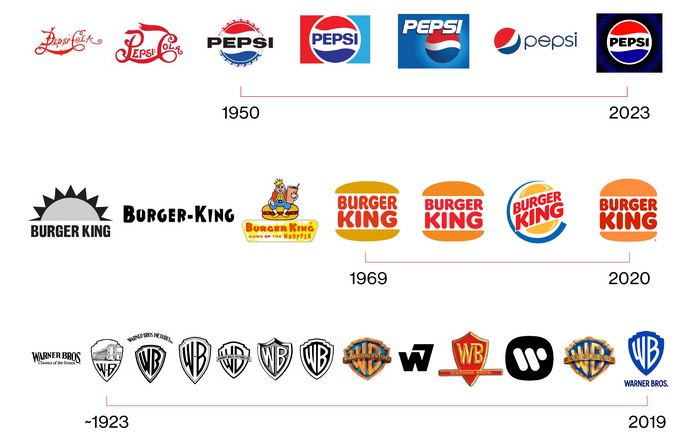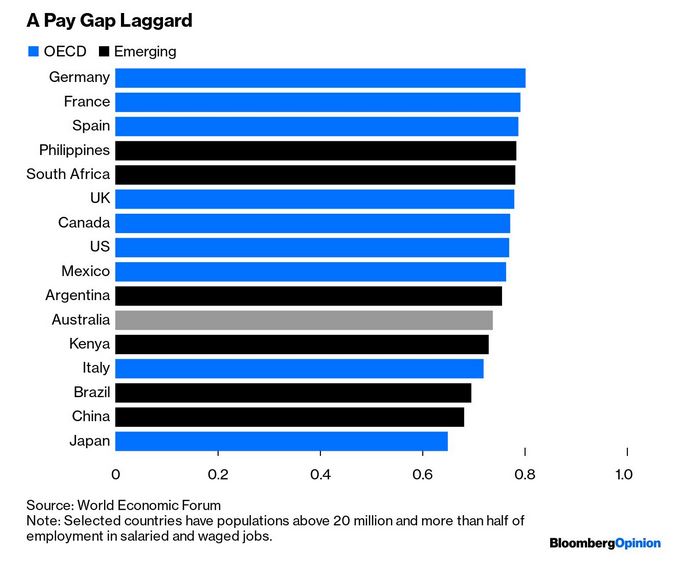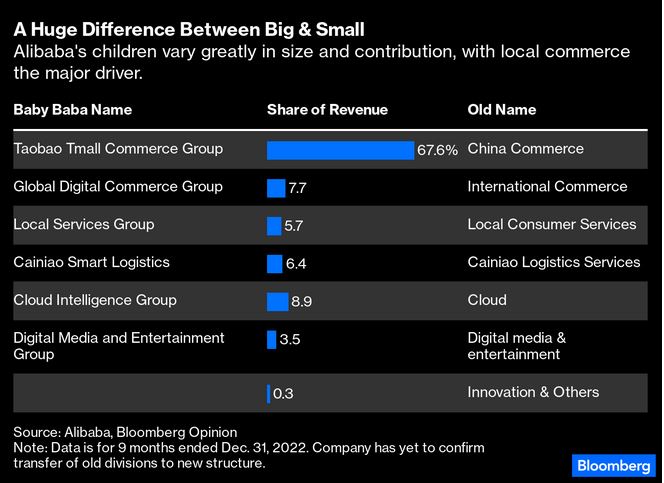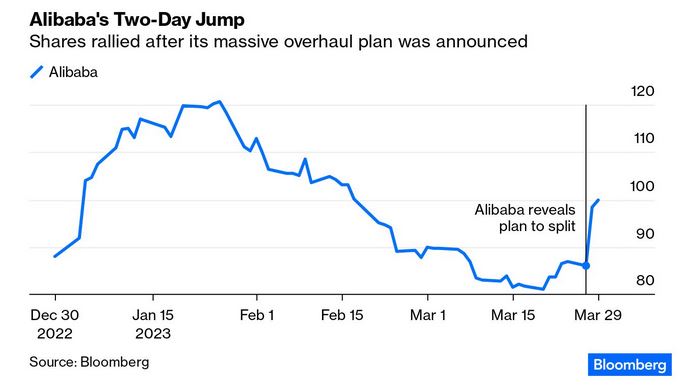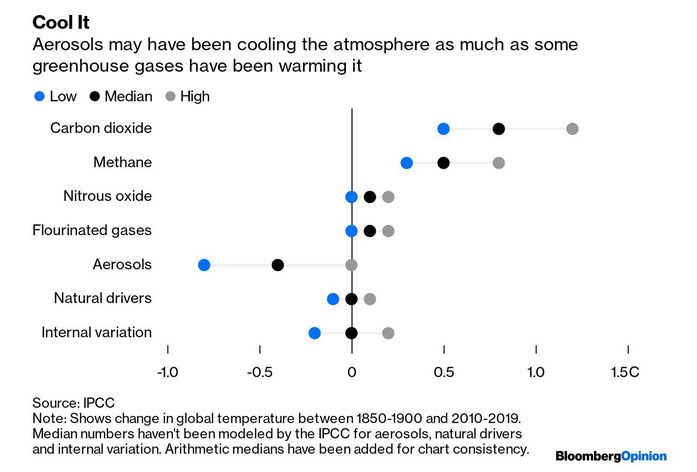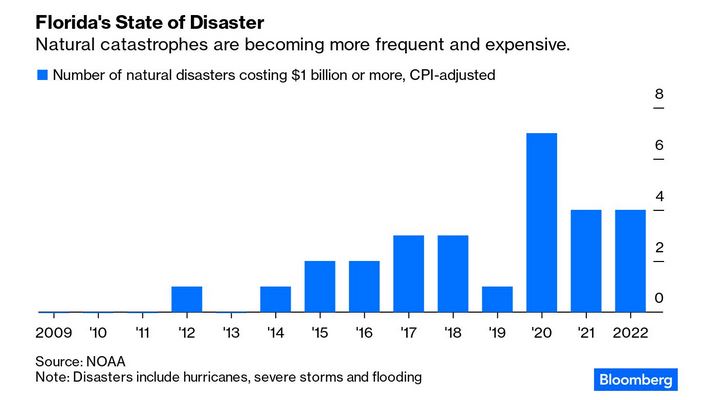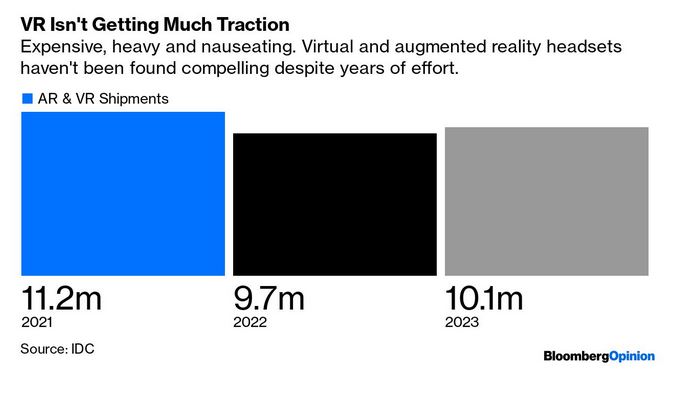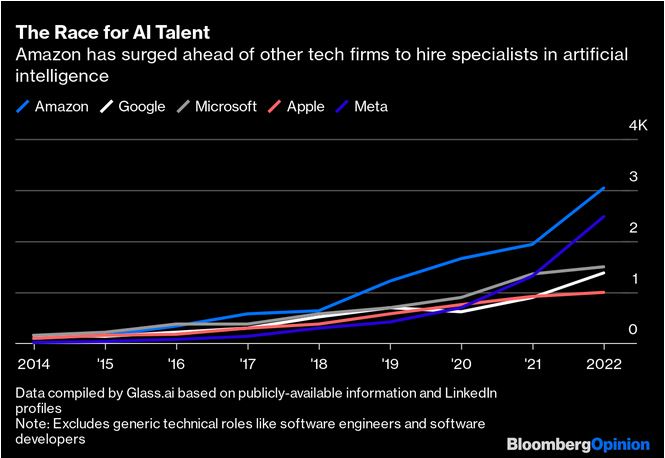
Châtenay-Malabry (FR - 92290), April 10, 2023
EFITA newsletter / 1068 - European Federation for Information Technology in Agriculture, Food and the Environment
The informatique-agricole.org site offers you the possibility of subscribing the RSS feeds of its two newsletters
See RSS feeds to implement to ensure that you continue to receive this newsletter
To unsubscribe this newsletter, please contact me directely: guy.waksman(a)laposte.net if this link Unsubscribe does not work.

To correspond with me (GW), please use this address: guy.waksman(a)laposte.net
To subscribe the efita newsletter (please ask your friends and colleagues to test this link)
Efita Newsletters subscription
Avant l’informatique / Before computers: A vintage John Deere tractor
Weekly newsletters about ICT in Agriculture in English and French
Both newsletters have around 5000 subscribers.
>>> Last weekly EFITA Newsletters in English (created in 1999) Efita Newsletters
>>> Last weekly AFIA Newsletters in French (created more than 20 years ago in 1997) Afia Newsletters
>>> Statistics for the latest efita newsletter
>>> Latest issue of the afia newsletter
>>> Latest available satistics for the afia newsletter
Coucher de soleil
rouge (1905-1908) de Arkhip Ivanovitch Kouïndji (1841-1910)
FutureFarming.com
> Electric drive now dominant on precision planters, an overview of 12 brands
Electric drive has become the dominant type of drive on precision planters. Some manufacturers offer it as standard, while others have it in the options list. Vegetable planters are the exception to the trend.
> Future farming: Sowing, pruning, and harvesting robot for Synecoculture farming developed
Researchers develop a four-wheeled robot to maintain mixed plant species grown under solar panels.
> Field robots: Are automatic outdoor strawberry harvesters really worth the investment?
Advanced Farm claims to be one of the leaders in the automation of outdoor strawberry picking, but is it really living up to its promises? We spoke with Matt, a strawberry grower who has been working with Advanced Farm robots for 4 years, to get his honest opinion about their harvesting solutions.
> Future farming: The glyphosate paradox
The decision to ban glyphosate is not an easy one. It requires a careful consideration of the risks and benefits, as well as a willingness to explore alternative approaches to weed management.
> Future farming: Detecting fusarium head blight using a smartphone
Could AI-powered object recognition technology help solve wheat disease? Researchers tested whether they could quantify kernel damage using simple cell phone images of grains.
> Future farming: Precision farming market to grow to USD 15.6 billion by 2030
The global precision farming market is expected to grow from USD 8.5 billion in 2022 to USD 15.6 billion by 2030, at a CAGR of 7.9%.
> Retrofit autonomy kits: Fieldin to deploy over 100 autonomy kits in 2023
Ouster, a leading digital lidar company, and Fieldin, a pioneer in smart farming and autonomous technology, have announced the largest deployment of retrofit autonomy kits for autonomous farm vehicles in the ag industry.
> Alternative fuels: Deutz launches hydrogen engine and mobile rapid charging system
Deutz showcased its TCG 7.8 H2 hydrogen engine at CONEXPO in Las Vegas, with full production of the engine expected to begin in 2024. The drive specialist also presented its PowerTree mobile charging system, which can be used in the absence of any power infrastructure.
> Glyphosate: How an EU glyphosate ban would affect farmers globally
The European Food Safety Authority will decide in July whether to continue with the registration of glyphosate. What implications will a possible EU ban on glyphosate have for farmers globally?
> Peter Ferguson, Advanced.Farm: ‘Offering the most advanced robotic picking solution’
US company Advanced.Farm offers robotic harvesting, sorting and packing systems optimised for the berry and tree fruit growing industry. Future Farming talked to co-founder Peter Ferguson about what sets their technology apart.
> Weed control: New Austrian sideshift frame for hoeing machines up to 6 rows
Austrian startup Farm-ING is expanding its portfolio of smart farming equipment with a sideshift frame for existing hoeing machines.
> Weed control: K.U.L.T. prepares hoeing machinery for robotic weed removal
Environmental friendly weed control specialist K.U.L.T. is preparing its hoeing machinery for robotic weed removal by introducing electrically operated in-row elements.
> Field robots: 12 precision planters in a row; electric drive is dominant now
Electric drive has become the dominant type of drive on precision planters. Some manufacturers offer it as standard, while others have it in the options list. Vegetable planters are the exception to the trend.
> Acquisition: CNH Industrial to acquire Hemisphere GNSS
CNH Industrial entered into an agreement to purchase Hemisphere GNSS (Hemisphere).
See futurefarming.com
Vladimirka de Isaac Ilitch Levitan (1860-1900)
How did we see the future yesterday??
See the incredible collection developed by Alain Fraval
Global Ag Tech Initiative
> AGCO and Bosch BASF Smart Farming Form Joint Development and Commercialization of Smart Spraying
The companies will integrate and commercialize Smart Spraying technology on Fendt Rogator sprayers, and jointly develop additional, new features.
> Intelinair Acquires Aker Technologies
Acquisition brings capabilities that will enhance Intelinair's AGMRI offering to existing customers and help expand its footprint going forward.
> Report Reveals 2023 Is the Year for Precision Agtech Investment – Here's Why
Factors such as failing global economies, high inflation, and supply chain challenges all contribute to a redirection of investment.
> How AgTech Can Bring the Buzz Back to South Australia
South Australian growers are feeling the impact of bee shortages but new hive technology can help beekeepers protect their bees while optimizing pollination.
> Ag Tech Talk Podcast: Tracking the Future of Supply Chain with CropTrak
CropTrak's Aaron Hutchinson discusses how supply chain software solutions can improve the procurement process and help ensure continued supplies.
> What the Future of Automation in Agriculture Might Look Like
Grower support is absolutely critical to the success of new technological products. That was the message from a recent VISION Conference panel.
> CNH Industrial to Acquire Hemisphere GNSS
Acquisition brings core satellite navigation technology in-house to strengthen CNH Industrial's precision solutions.
> Four Ways Remote Monitoring Increases Efficiency in Modern Ag Operations
From taking the guesswork out of irrigation, to accelerating response time to adverse weather, remote monitoring gives real-time visibility of entire operations.
> Agmatix Partners with NASA Harvest to Support the Uptake of Sustainable Agricultural Practices
A combination of ground sampling and remote sensing data will be used to support farmers in their transition toward sustainable agriculture.
> SWARM Engineering Launches AgriFood Virtual Advisor, Powered by OpenAI and Microsoft Azure
AI-powered digital assistant based is designed to help businesses in agri-food solve operational challenges and save millions of dollars.
See globalagtechinitiative.com
Forêt vierge
(1880) de Julius von Klever (1850-1924), Galerie Tretiakov
Climate change is slowing growth in agricultural productivity, latest IPCC report finds, AFN, by Lucy Ngige
- Though agricultural productivity has increased over the last 50 years, climate change has slowed this growth, according to the sixth Synthesis Report from the Intergovernmental Panel on Climate Change (IPCC).
- Crop production, animal health and productivity, fisheries and water availability are all impacted, especially in the world’s most vulnerable regions.
- Food insecurity will only increase as non-climate related risks such as conflict, pandemics and competition for land continue, says the report.
See agfundernews.com
S2G Ventures launches $300m opportunities fund for cap-intensive climate-tech startups, AFN, by Jennifer Marston
- S2G Ventures has officially announced the launch of its $300 million Special Opportunities fund.
- The fund will to provide flexible financing for social and environmental impact startups working in capital-intensive, asset-oriented industries including agriculture, energy and oceans.
- The new fund brings S2G’s assets under management to $2 billion.
…/…
See agfundernews.com
Hiver (1876) de Julius von Klever (1850-1924), Musée des Beaux-Arts d'Oulianovsk
Can blockchain alone guarantee traceability in our food system? AFN, by guest contributors: Chiara Corbo, Filippo Renga & Dana Bonaldi
In 2021, we examined the opportunities in blockchain for the agrifood sector. At the time, many agrifood companies wondered about the real benefits of the technology. Could blockchain guarantee transparency, traceability and immutability to data in the supply chain, or would it just be a trend?
After three years of research, in a world upset by deep economic and social changes, we rely on our data to try and answer such questions, starting with research conducted by the Smart AgriFood Observatory of Politecnico di Milano and Università degli Studi di Brescia.
>>> The contribution of blockchain to the agrifood sector
The agrifood sector continues to show interest in blockchain and distributed ledger technologies. In 2021, agrifood was the fourth-largest sector in terms of application of such technologies, accounting for 6% of overall pilot and operating projects.
Europe has the highest concentration of projects (28% of 106 identified projects), followed by Asia (17%) and America (16%).
There are four main reasons agricultural and agrifood companies adopt blockchain technology:
1. Objectives linked to commercial and marketing opportunities
In 54% of the 106 worldwide projects we analyzed, blockchain is mainly chosen to exploit commercial and marketing opportunities. Since blockchain has been the subject of media hype, many companies use it to try to demonstrate to consumers transparency and traceability information about their products. The final objective is certainly to gain a larger share of consumers, who are increasingly interested in food quality and traceability. Moreover, some digital instruments able to increase the user experience (in particular, QR codes and NFC tags) are used with a communicative purpose.
2. Objectives linked to the effectiveness of the supply chain
Blockchain’s characteristics of immutability and transparency are used to improve coordination among supply chain players by increasing the visibility of information and subsequently the effectiveness of the whole supply chain (47% of projects analyzed).
3. Objectives linked to sustainability
Environmental and social sustainability is becoming more and more relevant, according to 26% of the projects (up 2% compared to 2020). In most of these cases, companies try to keep track and to give visibility to their sustainability practices.
4. Objectives linked to food safety and anti-counterfeiting
Another use of blockchain concerns food safety objectives (13%), making the procedures of product recall more efficient and effective, especially in the large-scale distribution sector. There are also uses related to anti-counterfeiting (11%); blockchain allows stakeholders to keep track of data and its modification over time, making overwrites particularly difficult.
It is important to highlight the number of projects aimed at improving payment and economic transaction processing, which represented just a residual part of projects in the past and today accounts for 11% of cases analyzed.
…/…
See agfundernews.com
Village de
pêcheurs (1892) de Julius von Klever (1850-1924), Galerie Tretiakov
Access to finance for farmers: the rise of agrifintech, by FinTech Magazine
.../...
>> Agrifintech: providing the means to bring regenerative farming from niche to mainstream
Wildfires, floods, blizzards, melting glaciers, pandemics, war, famine, fuel shortages, inflation – 2022 will go down in history as the year when the world at large finally connected the dots. With the climate, environment and societies in crisis, investors and innovators are turning their attention to the agricultural sector, on which human life depends. Enabled in part by advancement in technology including AI, machine learning and blockchain, agrifintech is working to fill a gaping hole in agricultural finance that has held back progress towards regenerative farming for too long.
See fintechmagazine.com
Climate change: trees grow for extra month as planet warms - study
lobal warming is changing the way trees grow, new research suggests.
Researchers studying hardwoods in northwest Ohio say a century of warming has extended their annual growing season by a month on average.
The scientists from Ohio State University compared recent observations to detailed notes a local farmer began taking in the 19th Century.
They say the research has implications for how well different types of trees will cope with future climate change.
.../...
The implications of the longer growing period are unknown.
Trees are vital in sucking planet-warming carbon dioxide out of the atmosphere, and the researchers said a longer growing period probably meant they did more of that. But they warned that higher, fluctuating temperatures may also stress trees in ways so far unknown.
.../...
See bbc.com
Logos' evolution / Logos changeants
Women vs Men pay gap (Men salary =1) / Écart de rémunération entre les femmes et les hommes
Alibaba children / Sociétés issues du démantèlement d'Alibaba
Alibaba split effect / Effet du démantèlement d'Alibaba
Cooling aerosols
Celebrating Norman Borlaug: He Was Always Ahead Of His Time, by Henry I. Miller, ACSH
Twenty years ago, Nobel Laureate Norman Borlaug wrote about agricultural biotechnology – its promise, importance, over-regulation, and the mindless opposition to it from activists. His words ring true today.
See acsh.org
Robot measures leaf angles, helping breed better corn plants, by AGDAILY, March 13, 2023
Researchers from North Carolina State University and Iowa State University have demonstrated an automated technology capable of accurately measuring the angle of leaves on corn plants in the field. This technology makes data collection on leaf angles significantly more efficient than conventional techniques, providing plant breeders with useful data more quickly.
.../...
To test the accuracy of AngleNet, the researchers compared leaf angle measurements done by the robot in a corn field to leaf angle measurements made by hand using conventional techniques.
“We found that the angles measured by AngleNet were within 5 degrees of the angles measured by hand, which is well within the accepted margin of error for purposes of plant breeding,” Xiang says.
“We’re already working with some crop scientists to make use of this technology, and we’re optimistic that more researchers will be interested in adopting the technology to inform their work. Ultimately, our goal is to help expedite plant breeding research that will improve crop yield.”
See agdaily.com
Moulin abandonné (1890) de Julius von Klever (1850-1924), Galerie Tretiakov
Village sur l'île de Nargen (1881) de Julius von Klever (1850-1924)
Thinking Out Loud: Ignorance Scales, by Chuck Dinerstein, MD, MBA — January 31, 2023
Debunking bad science can be difficult. The misdirection, false assumptions, and biased narratives are often nuanced or built upon a series of citations requiring the debunker to go down the rabbit hole to find the underlying “truth.” Why is it so much harder to counter lies than to tell them?
…/…
See acsh.org
|
Gazette
de vitisphere.com, |
Evening Bells, 1893, de Isaac Ilitch Levitan (1860-1900)
Commercial development of gene-edited food now legal in England
Gene-edited food can now be developed commercially in England following
a change in the law.
Supporters of the technology say it will speed up the development of hardier
crops that will be needed because of climate change.
Critics say that the change could bring ''disaster'' to our food production
and the environment. (?!? – GW)
Gene editing involves making precise changes to an organism's DNA to enhance
certain characteristics.
…/…
See bbc.com
Neonicotinoids and their substitutes in sustainable pest control
Conclusion 6: We confirm that the prophylactic use (e.g. seed coating)
of neonicotinoids is inconsistent with IPM. Inclusion of neonicotinoids
in the options for the final (last resort) tier of the IPM pyramid should
be avoided under the precautionary principle.
However, all applications of insecticides and fungicides by seed treatment
are prophylactic. If the pest or pathogen does not appear, the treatment
will have been useless. Should we refrain from this method, so sparing
in active substances, in the name of a concept of IPM: will we only act
after observation of the first damage?
See
easac.eu
CO2 removal can’t turn back the clock, by David Ho
If everyone on Earth planted a tree — 8 billion trees — it would
take turn the world’s carbon dioxide emissions clock back in time by about
43 hours every year, once the trees had matured. The four carbon
dioxide removal hubs under development in the United States would turn
back the emissions clock by only 13 minutes per year. The comparison
highlights that carbon dioxide removal is a drop in the bucket compared
with society eliminating its polluting activities, argues oceanographer
See nature.com
Florida's Desasters
Guts or Balls
Wanted: AI specialists
Facing floods: What the world can learn from Bangladesh's climate solutions,
byJack Devanney
Voir jackdevanney.substack.com
How will we feed Earth’s rising population? Ask the Dutch. By Kenny Torrella,
Mar 23, 2023
The Netherlands’ hyper-efficient food system is both a triumph and a cautionary
tale.
.../...
Most dairy cows are raised on cement flooring, where their urine and feces,
both high in nitrogen, fall through slats and mix into a slurry, creating
ammonia — a more potent form of nitrogen. De Koning’s research center
has tested new flooring that separates the urine and feces early on to
reduce ammonia emissions. WUR researchers also say they can cut cows’
ammonia levels 15 percent by reducing the protein in cows’ diets by 10
percent — another project at the dairy campus.
One of the more elaborate approaches to reducing nitrogen from dairy farms
is the CowToilet, a machine developed by the agriculture equipment company
Hanskamp and tested by WUR. The cow enters a feed station, and after she’s
finished eating, a bucket rubs a nerve above her udder that triggers a
urinating reflex. The bucket catches the urine, which is then stored in
a tank. Hanskamp says this can catch about 50 percent of a mature dairy
cow’s 3.75 to 5 gallons of daily urination, as they also urinate elsewhere.
.../...
See
vox.com
ChatGPT’s ‘iPhone Moment’ Poses a New Threat to Google, by Parmy Olson,
April 3, 2023
Its new plugins could turn it into the web’s switchboard, giving people
a new reason to ditch the search giant.
Just as we were getting used to the idea of ChatGPT writing emails and
conducting research, OpenAI has upgraded it with capabilities that make
it even more of a threat to big tech companies such as Google. ChatGPT’s
new plugins, released last week with relatively little fanfare, are a
major leap forward for the technology.
In a nutshell, it is going from merely generating text to taking action
on the web, turning it into the type of powerful virtual assistant that
Alphabet Inc.’s Google and Apple Inc. have been trying to build for years.
ChatGPT’s plugins allow businesses to essentially plug the tool into their
own systems so that it can do things like search proprietary datasets
or even carry out tasks like booking a restaurant, or writing and executing
code. There are serious potential risks from this, but in the corporate
game of technological one-upmanship, OpenAI has created a daunting new
front against the incumbents.
That’s because for the plugins to work, users have to visit the website
of ChatGPT itself, according to demos of the new system. For instance,
American users of ChatGPT will soon be able to go to the tool’s main page
and select the plugin for Klarna Bank AB, a payments facilitator for thousands
of brands like Nike Inc. and Gucci. Once they select Klarna, they could
ask ChatGPT to make product recommendations for a gift for their sister.
Thanks to the powerful language model underpinning ChatGPT, known as GPT-4,
they can give the kind of detail they’d share with a human retail employee,
laying out at length how their sister loves movies and kayaking and is
in their 30s, for instance. ChatGPT can then make the recommendation.
See
bloomberg.com
Or see archive.today
March (1895), de Isaac Ilitch Levitan (1860-1900), State Tretiakov
Gallery
How AI startups are fully automating drug discovery, by Adam Green,
30 March 2023
Startups could start to offer fully automated drug discovery services
to the pharmaceutical industry.
Despite billions of dollars of investment, the pharmaceutical industry
is struggling to cure major diseases, from cancer to dementia.
The average time taken to develop a drug is over 12 years and often far
longer, and costs over $1bn. Nine out of ten drugs developed fail to win
regulatory approval — and many drug candidates never move from “bench
to bedside”, with only around 500 of the thousands of diseases in existence
having an approved treatment.
“Two thirds of diseases don’t have adequate treatments,” says Tanja Dowe,
CEO at Debiopharm Innovation Fund, the strategic investment arm of the
Switzerland-based drug developer. “The pharmaceutical industry cannot
continue like this.”
The problem? Dowe says that the pharmaceutical industry has failed to
adopt engineering techniques like simulation and modelling — which have
come to play a significant role in other industries. “We simply cannot
innovate without using those systems,” she says.
So how can generative AI — the tech recently popularised by ChatGPT, the
chatbot developed by Silicon Valley-based OpenAI, and hyped by investors
— change the drug discovery game? And what’s different now than the revolution
that was promised ten years ago?
.../...
See
sifted.eu
This Bizarre Wind Turbine Could Make Offshore Wind The Ultimate Clean
Energy
A fresh approach has yielded remarkable results.
.../...
Rather than using a single giant fan, each Wind Catching unit has a vast
300-by-300-metre fence with many, many fans spread across it. These smaller
fans are likely less efficient than a single large one in low-to-mid wind
speeds but can stay functional at hurricane-like wind speeds without falling
apart. What’s more, their overall swept area is approximately double that
of wind turbines currently in use.
This has some serious upsides. According to the company, “utilising the
full energy in higher wind speeds and the multirotor effect, the Windcatcher
generates 2.5x more annual energy per swept area than a conventional turbine.
Having double the swept area of a conventional 15 MW wind turbine, one
Wind Catching unit will generate 5x the annual energy production.” This
means that fewer units need to be built, installed, and maintained, making
them far more cost-effective than traditional turbines. For some sense
of just how much more efficient this design is in this way, five Wind
Catching units will produce the same amount of energy per year as 25 15-MW
offshore wind turbines. What’s more, the extra compaction should make
them even more beneficial to ocean ecosystems, particularly in shallow
seas.
This unique construction also makes installation and maintenance more
accessible and cheaper. This is because it can be installed and maintained
using non-specialised vessels, further reducing costs!
.../...
Savvinskaya sloboda near Zvenigorod (1884)
Our World In Data: We published a redesign of our
work on the Ozone Layer
The ozone layer plays a vital role in making the planet habitable for
us and other species. High in the atmosphere – between 10 to 50 kilometers
above the earth’s surface – the ozone layer absorbs most of the sun’s
ultraviolet radiation.
But, during the 1970s, '80s, and '90s, humans were emitting large quantities
of substances that depleted the ozone layer. This led to the creation
of ozone holes at the earth’s poles, exposing life to higher levels of
ultraviolet radiation and increasing the risks of skin cancer in humans.
During the 1980s, the world came together to form an international agreement
to reduce – and eventually eliminate – emissions of these depleting substances.
The political agreements were very effective. Since then, global emissions
have fallen by more than 99%.
The ozone holes have stopped growing and are now starting to close.
Our redesigned page includes all of our data, visualizations, and writing
on the ozone layer, its depletion, and its path to recovery.
|
See
ourworldindata.org
10/04/2023 |
 |
Technology over the long run: zoom out to see how dramatically the world can change within a lifetime
It is easy to underestimate how much the world can change within a lifetime. Bringing to mind how dramatically the world has changed can help us see how different the world could be in a few years or decades.
|
See
ourworldindata.org |
Our World In Data: How does age standardization make health metrics comparable?
We’d like to compare the rates of health outcomes, such as the death rate from cancer, across countries and over time.
But there’s a problem: we know that age is a significant risk factor for cancer and many other diseases, and countries can have very different age structures. For example, one country might have a much older population than another. The age structure within a country also changes over time as the population ages.
What do we do? How can we compare the rates of health outcomes across countries and over time?
The answer is age standardization. Age standardization involves adjusting the observed rates of a particular health outcome to a “standard population” with a specific age structure. This allows us to compare rates of health outcomes without age differences being an issue.
In this article, we show step by step how the adjustment for age standardization works.
|
See ourworldindata.org |
 |
A man and a giraffe walk into a bar
After a few drinks, the giraffe falls over and dies. The man begins to
walk out when the bartender stops him.
“Hey, you can’t leave that lyin’ there!” The bartender yells out.
The man turns around: “It’s not a lion. It’s a giraffe.”
| |
The creation of this efita newsletter is spnsored by Acta Digital Services and its distribution by vitisphere.com
Please, contribute to the content of your efita newsletter, and advertise your events, new publications, new products and new project in this newsletter. Without your support, it will not survive!
Contact: Guy WAKSMAN
E-mail: guy.waksman(a)laposte.net
To read this newsletter on our web site
See Efita
The archives of this newsletter
See Efita
Do not miss the Virus Jokes in English and French
About the EFITA mailing list
You can use the efita moderated list (> 15000 subscribers) to announce any event / product / web site / joke (!) related to IT in agriculture, environment, food industry and rural areas.
If you want to subscribe a friend, please fill in his form.
If you do not wish to receive our messages, please fill in the following form...






